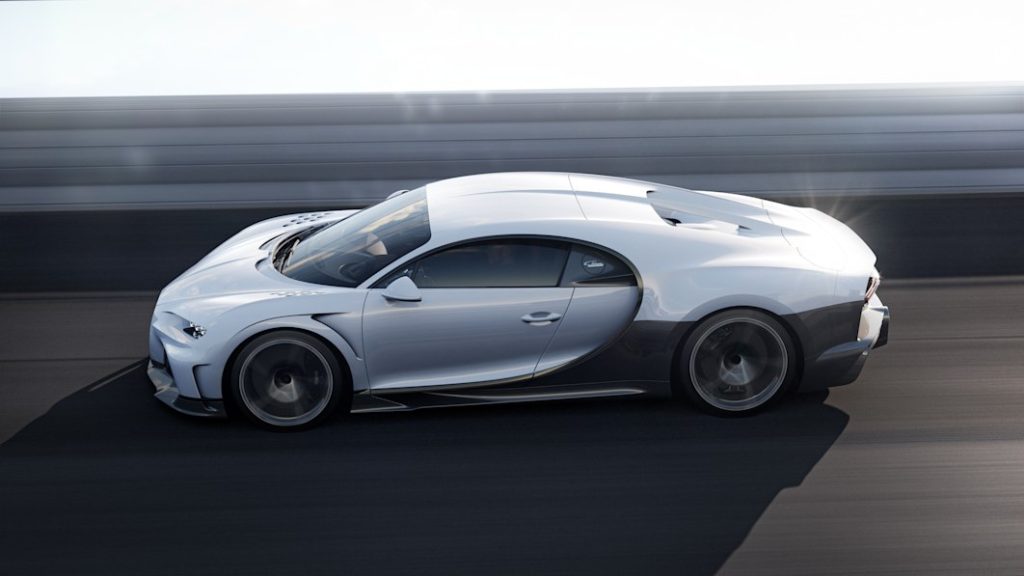Bugatti plots PHEV Chiron successor with more athletic proportions

Bugatti is ready to close the W16 chapter of its history; the Mistral roadster it unveiled in August 2022 is the final street-legal car powered by the quad-turbocharged engine. What’s next remains shrouded in secrecy, but the French firm gave Autoblog a few hints of what to expect.
First, let’s dispel a myth: The Chiron’s successor will not be electric. Achim Anscheidt, Bugatti’s design director, confirmed that the model — whose name hasn’t been announced yet — will be powered by a plug-in hybrid powertrain. Rimac has previously described the drivetrain as “heavily electrified,” but precise technical details such as horsepower and layout haven’t been made public. All we know for sure at this stage is that the W16 won’t return and that many key components under the body (including the monocoque and the subframes) will be new.
In terms of design, it sounds like Anscheidt instructed his team to balance evolutionary and revolutionary approaches.
“[The car] will certainly be tailored to one or the other aspect of a hybrid. We see the potential to improve the overall automotive gesture of the car,” he said.
Dialing in new proportions is something his team wasn’t able to do when it designed the Chiron, because parts like the monocoque and the doors were carried over from the Veyron. Beyond the overall shape, Anscheidt noted he’d like to see Bugatti’s design language get leaner and more athletic, but there’s a limit to this stretch. Regardless of what the Chiron’s successor looks like, it needs to stay true to the ambivalent character of “the automotive Beauty and Beast” and be instantly recognizable as a Bugatti
“In comparison to other hyper-sports cars, Bugatti always created its own sovereign segment. It was always slightly different, never trying to be a race car for the road. It is the ultimate GT. That should not change from one day to the other. We don’t want to become somebody else, but we’re opening a new tech chapter which is a challenge as well as an opportunity,” he clarified.
The cabin will evolve as well, but it won’t necessarily follow the industry’s ongoing shift toward wall-to-wall screens.
“When you look at today’s cars, it becomes very apparent that there are screens everywhere. Where is this leading us? Yes, I think that customers deserve to have full entertainment in their daily driver. This is the [interior design trend] of the automotive industry, and we don’t want to question that. However, I wonder: who still has an iPhone 3? Nobody, and you probably don’t want to have one anymore. It likely doesn’t work. What happens to those cars when they are 20 or 30 years old? Do those screens still work? Did one do all of the updates?”
Anscheidt and his team actively debate what this means for Bugatti and its customers as they shape the Chiron’s successor. Not all companies worry about whether the technology they put in their cars will work in two or more decades, but Bugatti is in a unique position: its cars are instant collectibles. They’re rolling works of art created to be enjoyed and admired by enthusiasts who aren’t born yet.
“Bugatti models need to sit on the lawn at Pebble Beach in 50 years and work. Just like we see pre-war luxury automobiles that still work. What a disaster it would be if a Bugatti would sit there and there are only black screens [inside].” We’ll need to be patient to find out the solution that Anscheidt comes up with. “We’re carefully thinking about this. I’m not saying that we have the ultimate answer, but I’m saying there is something that makes precious cars and precious brands worth thinking about for the sake of future generations,” he summed up.




